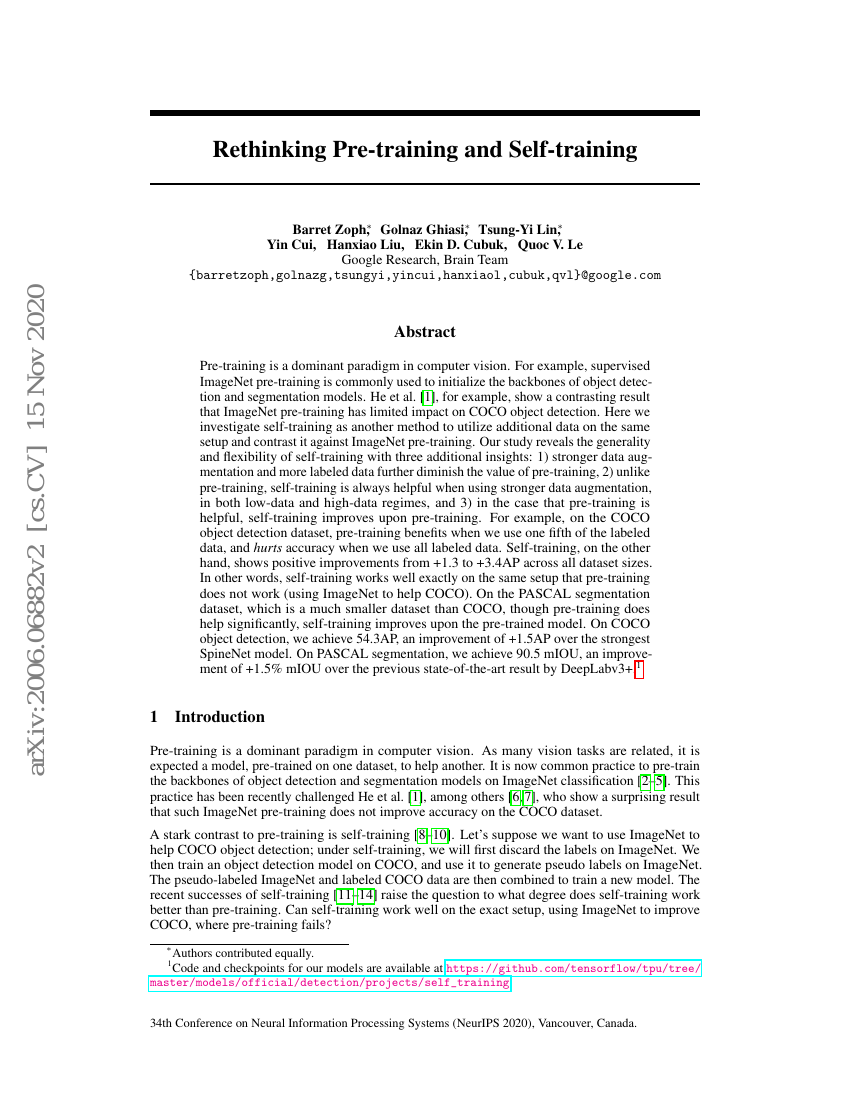Command Palette
Search for a command to run...
Barret Zoph Golnaz Ghiasi Tsung-Yi Lin Yin Cui Hanxiao Liu Ekin D. Cubuk Quoc V. Le

Abstract
Pre-training is a dominant paradigm in computer vision. For example, supervised ImageNet pre-training is commonly used to initialize the backbones of object detection and segmentation models. He et al., however, show a surprising result that ImageNet pre-training has limited impact on COCO object detection. Here we investigate self-training as another method to utilize additional data on the same setup and contrast it against ImageNet pre-training. Our study reveals the generality and flexibility of self-training with three additional insights: 1) stronger data augmentation and more labeled data further diminish the value of pre-training, 2) unlike pre-training, self-training is always helpful when using stronger data augmentation, in both low-data and high-data regimes, and 3) in the case that pre-training is helpful, self-training improves upon pre-training. For example, on the COCO object detection dataset, pre-training benefits when we use one fifth of the labeled data, and hurts accuracy when we use all labeled data. Self-training, on the other hand, shows positive improvements from +1.3 to +3.4AP across all dataset sizes. In other words, self-training works well exactly on the same setup that pre-training does not work (using ImageNet to help COCO). On the PASCAL segmentation dataset, which is a much smaller dataset than COCO, though pre-training does help significantly, self-training improves upon the pre-trained model. On COCO object detection, we achieve 54.3AP, an improvement of +1.5AP over the strongest SpineNet model. On PASCAL segmentation, we achieve 90.5 mIOU, an improvement of +1.5% mIOU over the previous state-of-the-art result by DeepLabv3+.
Code Repositories
Benchmarks
| Benchmark | Methodology | Metrics |
|---|---|---|
| object-detection-on-coco | SpineNet-190 (1280, with Self-training on OpenImages, single-scale) | Hardware Burden: Operations per network pass: box mAP: 54.3 |
| object-detection-on-coco-minival | SpineNet-190 (1280, with Self-training on OpenImages, single-scale) | box AP: 54.2 |
| semantic-segmentation-on-pascal-voc-2012-val | EfficientNet-L2+NAS-FPN (single scale test, with self-training) | mIoU: 90.0% |
Build AI with AI
From idea to launch — accelerate your AI development with free AI co-coding, out-of-the-box environment and best price of GPUs.